Introduction
Silicone rubber is an indispensible material in the medical industry due to its excellent properties and applications. Offering exceptional pliability, biocompatibility, and durability – Silicone rubber products designed specifically for use within this sector must meet strict safety, durability, and functionality standards for maximum effectiveness and patient wellbeing.
Silicone rubber has long been relied upon by medical professionals and manufacturers due to its superior biocompatibility with humans and minimal risk of allergic reactions. Furthermore, silicone rubber exhibits great temperature resistance allowing medical devices to work effectively across a range of environments while its chemical resistance allows it to work well with various sterilization methods making it an excellent material choice for medical applications.
Design plays an essential role in optimizing medical silicone rubber products for the medical industry. By considering the specific requirements for each application, designers can develop products that satisfy healthcare providers and patients alike. Careful consideration in product creation helps increase patient care quality while improving treatment outcomes and contributing to advances in medical technology. lsr molding.

Following are key considerations and steps involved in designing silicone rubber products for medical applications. By understanding these crucial aspects, designers and manufacturers can develop innovative and dependable solutions that improve healthcare.
II. Understanding the Requirements
Designing silicone rubber products for medical applications requires an in-depth knowledge of their intended application’s specific requirements, so designers can produce products that fulfill them to the highest standards of quality, safety, and effectiveness.
One essential step in creating any product is understanding its intended function. Whether an implant, medical device or equipment piece, knowing this knowledge helps shape design decisions as well as determine features and performance characteristics needed.
Designers must also take into account the intended use of their product. Will it be utilized for diagnostic or surgical procedures, patient monitoring or rehabilitation purposes? Each use case may have specific requirements related to ergonomics, ease of use or compatibility with existing medical equipment.
Compliance with regulatory standards and certifications is another essential aspect. Different countries and regions have various regulations regarding the design and production of medical devices; it is imperative to identify applicable standards to ensure compliance and facilitate market entry.
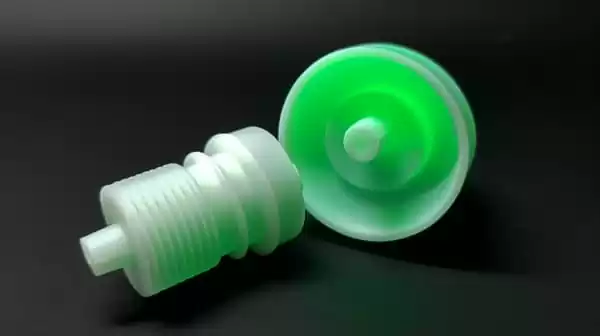
Consultation with medical professionals and experts is invaluable when seeking insights into the needs and challenges facing the healthcare industry. Their experience can provide invaluable guidance regarding design requirements, materials, functionality and patient safety. Collaborating with these healthcare experts also fosters greater knowledge about healthcare environments that allows for the creation of innovative solutions tailored specifically to real-world requirements.
Designers can meet the specialized demands of medical applications by understanding their exact specifications and designing silicone rubber products specifically tailored for this industry. By taking such a holistic approach, their end product ensures optimal performance, increases patient care and advances medical technology.
III. Material Selection
Selecting the appropriate silicone rubber material is crucial in designing silicone rubber products for the medical industry. The choice of material directly impacts the product’s performance, biocompatibility, durability, and overall success. Here are some key factors to consider during the material selection process:
- Biocompatibility: Medical-grade silicone rubber is specifically formulated to be biocompatible, meaning it is safe for prolonged contact with living tissues or bodily fluids without causing harmful reactions. This characteristic is essential for implants, medical devices, and other products that come into direct contact with the human body.
- Sterilization Requirements: Medical products often require frequent sterilization to maintain strict hygiene standards. The chosen silicone rubber material should be compatible with common sterilization methods, such as steam autoclaving, ethylene oxide (EO) gas sterilization, and gamma irradiation. Ensuring the material can withstand these sterilization processes without degradation is critical.
- Durability and Flexibility: Silicone rubber offers excellent durability, making it suitable for applications that require long-term performance and reliability. It can withstand repeated use, exposure to harsh chemicals, and rigorous cleaning procedures without compromising its structural integrity. Additionally, silicone rubber’s inherent flexibility allows it to conform to complex shapes, enabling the design of intricate and ergonomic medical devices.
- Medical-Grade Silicone Rubber: Opting for medical-grade silicone rubber is highly recommended. Medical-grade silicone undergoes stringent testing and meets industry standards, such as ISO 10993, to ensure it meets the necessary biocompatibility and safety requirements. It is specifically formulated to withstand the demanding conditions of the medical environment, including chemical exposure, extreme temperatures, and physical stress.
Medical-grade silicone rubber possesses a range of characteristics that make it suitable for medical applications. It exhibits exceptional chemical resistance, making it compatible with various medications, bodily fluids, and disinfectants. It can maintain its physical properties over a wide temperature range, allowing medical devices to function reliably in extreme conditions. Furthermore, medical-grade silicone rubber offers excellent electrical insulation properties and can withstand the rigors of repeated sterilization cycles.
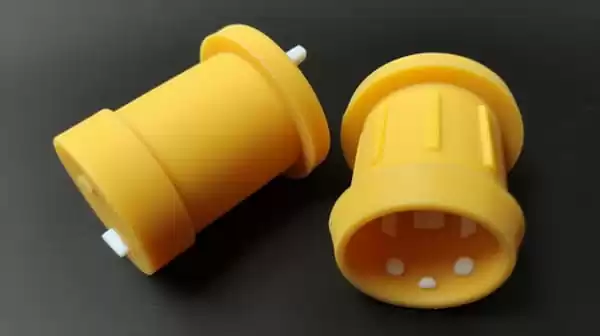
By selecting the right silicone rubber material, particularly medical-grade silicone rubber, designers can ensure that their products meet the stringent requirements of the medical industry. This choice guarantees biocompatibility, durability, and functionality, ultimately contributing to improved patient care and safety.
IV. Design Considerations
When designing silicone rubber products for the medical industry, several essential considerations should be taken into account to ensure successful outcomes. These considerations encompass both the functionality and manufacturability of the product. Here are the key aspects to focus on:
- Design for Manufacturability: Designing for manufacturability is crucial to ensure efficient and cost-effective production of silicone rubber products. Collaboration with manufacturers early in the design process allows for the identification of potential manufacturing challenges and the incorporation of design features that streamline the production process. Consider factors such as moldability, part ejection, and mold design to optimize the manufacturing cycle.
- Optimizing Physical Properties: Silicone rubber can be tailored to exhibit specific physical properties to meet the unique requirements of different medical applications. For example, for surgical instruments or devices used in high-temperature environments, silicone rubber with excellent heat resistance is essential. On the other hand, products that require flexibility and elasticity, such as prosthetics or catheters, should possess appropriate mechanical properties.
- Functionality and Ergonomics: Designing silicone rubber products with a focus on functionality and ergonomics is crucial for enhancing user experience and improving patient outcomes. Consider factors such as ease of use, intuitive operation, and ergonomic considerations to ensure that the product meets the needs of healthcare professionals and patients alike.
- Regulatory Compliance: Compliance with regulatory standards and certifications is of utmost importance in the medical industry. Ensure that the design adheres to applicable regulations and industry standards to guarantee product safety and market acceptance. Engage with regulatory experts and stay up to date with the latest requirements to meet all necessary compliance measures.
- Material Selection and Compatibility: Ensure that the chosen silicone rubber material is compatible with any additional materials or components that may be integrated into the design. Consider factors such as adhesion, compatibility with adhesives or coatings, and any potential material interactions that may impact product performance and reliability.
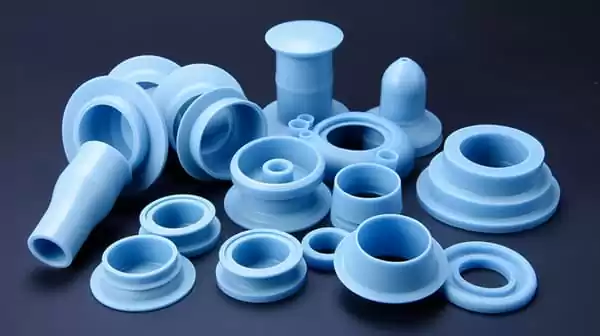
By addressing these design considerations, designers can create silicone rubber products that not only meet the functional and physical requirements of specific medical applications but also facilitate efficient and cost-effective manufacturing processes. Careful consideration of these aspects leads to products that are safe, reliable, and effective in meeting the needs of healthcare professionals and patients.
V. Manufacturing Methods
Various manufacturing methods can be employed for producing silicone rubber products in the medical industry. Each method offers distinct advantages and considerations. Here are three commonly used methods:
- Liquid Injection Molding (LIM): Liquid injection molding involves injecting liquid silicone rubber prototypes (LSR molding) into a mold cavity and curing it to form the desired product. LIM offers several advantages, including:
- High precision and intricate part design capabilities.
- Reduced cycle times due to fast curing of LSR.
- Good repeatability and consistency. Considerations for LIM include the need for specialized equipment, such as LSR-specific injection molding machines, and the requirement for post-curing to achieve optimal physical properties.
- Transfer Molding: Transfer molding involves preheating solid silicone rubber (HTV) and transferring it into a mold cavity, where it is compressed and cured. Transfer molding offers the following advantages:

- Suitable for molding larger parts and thin wall sections.
- Excellent control over material flow and cavity filling.
- Can incorporate additional features, such as insert molding. Considerations for transfer molding include longer cycle times and the need for additional steps, such as preheating the material.
- Conventional Injection Molding: Conventional injection molding is used for producing silicone rubber products by using solid silicone rubber (HTV) in a process similar to plastic injection molding. It offers the following advantages:
- Ideal for high-volume production.
- Wide range of materials available, including medical-grade silicone rubber.
- Compatibility with existing injection molding equipment and processes. Considerations for conventional injection molding include limited design flexibility compared to LSR and potential challenges related to material flow and mold filling.
The selection of the manufacturing method depends on various factors, including the complexity of the design, the desired volume of production, and the specific characteristics required for the medical application. Collaboration with experienced manufacturers is essential to determine the most suitable manufacturing method based on the project requirements.
By understanding the advantages and considerations of each manufacturing method, designers can make informed decisions and choose the method that best aligns with their design goals, production volume, and product requirements in the medical industry.
VI. Key Factors in Design
The design process for silicone rubber products in the many medical devices involves considering various factors that contribute to the functionality, manufacturability, and overall success of the product. Here are some important factors to consider during the design process:
- Wall Thickness: Proper wall thickness is crucial for silicone rubber products to ensure structural integrity, functionality, and ease of manufacturing. Thicker walls provide strength and durability, while thinner walls allow for flexibility and elasticity. Balancing wall thickness throughout the design is essential to optimize both mechanical performance and manufacturability.
- Undercuts: Undercuts refer to features or geometries that prevent easy removal of the part from the mold. Designing silicone rubber products with undercuts requires special considerations, such as incorporating draft angles, side actions, or collapsible cores, to facilitate part ejection during the manufacturing process. Properly addressing undercuts ensures efficient mold release and minimizes the risk of part damage or deformation.
- Part Size and Surface Area: The size and surface area of the product can impact both functionality and manufacturing. Large parts may require additional support or reinforcement, while smaller parts may require higher precision molding techniques. Optimizing surface area is crucial for efficient manufacturing and reducing material waste.
- Integrating Additional Features: Integrating additional features into silicone rubber products can enhance their functionality and usability. This may include incorporating inserts, such as metal or plastic components, to provide strength or specific functionalities. Careful consideration should be given to ensure proper adhesion and compatibility between the silicone rubber and the additional materials.
- Minimizing Parting Lines: Parting lines are the visible lines or seams formed when multiple mold sections meet during the manufacturing process. Minimizing parting lines is important for both aesthetics and functionality. It can reduce the risk of bacteria buildup and facilitate easier cleaning and sterilization. Designing with smooth transitions and appropriate mold parting line placement can help achieve a seamless and visually appealing final product.
By considering these key factors during the design process, designers can optimize the functionality, manufacturability, and overall performance of silicone rubber products in the medical industry. Collaboration with manufacturers and incorporating their expertise in design for manufacturability can further enhance the success of the product.
VII. Testing and Validation
Testing and validation play a crucial role in the design process of silicone rubber products for the medical industry. They are essential steps to ensure product safety, functionality, and regulatory compliance. Here’s why testing and validation are of utmost importance:
- Product Safety: Testing is necessary to ensure that silicone rubber products meet rigorous safety standards. By subjecting the products to various tests, potential risks and hazards can be identified and mitigated. This includes assessing biocompatibility, chemical resistance, electrical resistance, and mechanical properties to ensure the product is safe for use in medical applications.
- Functionality and Performance: Testing is crucial for evaluating the functionality and performance of silicone rubber products. It allows designers to verify that the product meets the desired specifications and performs as intended. Functional testing may involve assessing factors such as mechanical strength, flexibility, compatibility with other components, and proper functioning of any integrated features or mechanisms.
- Quality Assurance: Testing helps ensure the quality and reliability of silicone rubber products. By conducting rigorous testing during the design process, potential issues or defects can be identified and resolved early on. This ensures that the final product meets the highest standards of quality, minimizing the risk of failure or malfunction.
- Regulatory Compliance: Testing is an integral part of demonstrating regulatory compliance in the medical industry. Regulatory bodies have specific requirements and standards that products must meet to be approved for use. Testing ensures that the product adheres to these standards, providing evidence of safety, performance, and efficacy. This is especially crucial for obtaining regulatory certifications and approvals necessary for market entry.
Testing methods commonly used for silicone rubber products in the medical industry include:
- Biocompatibility Testing: Evaluates the product’s compatibility with living tissues and the potential for adverse reactions.
- Chemical Resistance Testing: Determines the product’s resistance to various chemicals, disinfectants, and cleaning agents.
- Mechanical Testing: Assess the product’s mechanical properties such as tensile strength, elasticity, and tear resistance.
- Sterilization Testing: Verifies the product’s ability to withstand the intended sterilization methods without degradation.
- Functional Testing: Tests the product’s functionality and performance under realistic conditions, simulating actual usage scenarios.
By conducting thorough testing and validation throughout the design process, designers can ensure that silicone rubber products in the medical industry meet the highest standards of safety, functionality, and quality. This not only instills confidence in the product’s performance but also contributes to patient safety and improves overall healthcare outcomes.
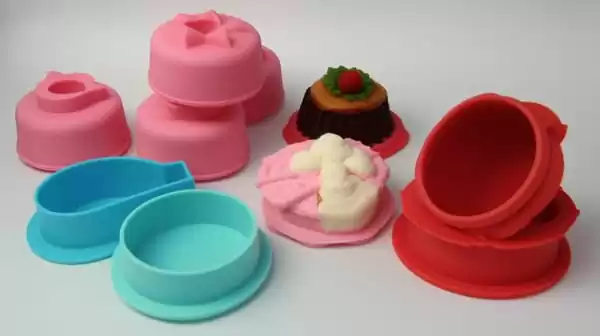
VIII. Regulatory Compliance
Adhering to regulatory standards and certifications is of utmost importance in the design and production of silicone rubber products for the medical industry. Compliance ensures that products meet stringent requirements for safety, effectiveness, and quality. Here’s why regulatory compliance is essential:
- Patient Safety: Regulatory standards and certifications are designed to safeguard patient safety. Compliance ensures that silicone rubber products undergo rigorous testing, validation, and quality control measures to minimize risks and hazards associated with their use. By adhering to these standards, the industry can maintain the highest level of safety and protect patients from potential harm.
- Market Acceptance: Regulatory compliance is often a prerequisite for market acceptance and commercialization of medical devices. Regulatory bodies, such as the FDA (Food and Drug Administration) in the United States or the CE (Conformité Européene) marking in the European Union, establish guidelines and requirements that must be met for products to be legally sold and distributed. Compliance with these regulations enables smooth market entry and acceptance by healthcare providers and consumers.
- Quality Assurance: Regulatory compliance ensures that silicone rubber products are manufactured with consistent quality. By following regulatory guidelines, manufacturers implement robust quality management systems, including processes for design control, risk management, documentation, and traceability. Compliance helps in identifying and resolving issues early on, reducing the risk of product defects and improving overall product quality.
- Role of Medical Device Manufacturers: Medical device manufacturers play a vital role in ensuring regulatory compliance. They are responsible for developing and producing silicone rubber products that meet the required standards and certifications. This involves establishing appropriate quality management systems, conducting thorough testing and validation, and maintaining documentation to demonstrate compliance with regulatory requirements. Manufacturers also act as liaisons between regulatory bodies and designers, assisting in the regulatory submission process and ensuring ongoing compliance throughout the product lifecycle.
Adhering to regulatory standards and certifications is a shared responsibility among all stakeholders in the medical industry. Designers, manufacturers, and regulatory bodies collaborate to ensure that silicone rubber products meet the highest standards of safety, efficacy, and quality. By embracing regulatory compliance, the industry can foster trust, confidence, and continuous improvement, ultimately leading to improved patient care and better healthcare outcomes.
Conclusion
Conclusion When designing silicone rubber products for medical applications, designers must take careful account of multiple factors in order to ensure safety, functionality, and regulatory compliance.
Careful design considerations for silicone rubber products used in healthcare settings are of utmost importance in designing innovative and reliable solutions that increase patient care while simultaneously contributing to advancements in technology. By carefully considering specific requirements, selecting suitable materials, optimizing design features, and adhering to regulatory standards, designers can produce groundbreaking innovations that improve patient care while contributing to advancements in medical technology.
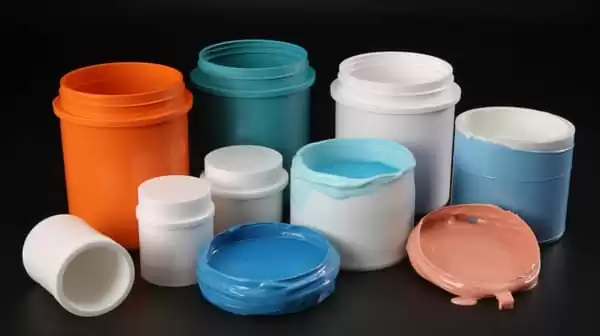
By taking these design considerations into account, the medical industry can create high-quality silicone rubber products that meet the ever-evolving needs of healthcare providers, improve patient outcomes and facilitate technological advances.



